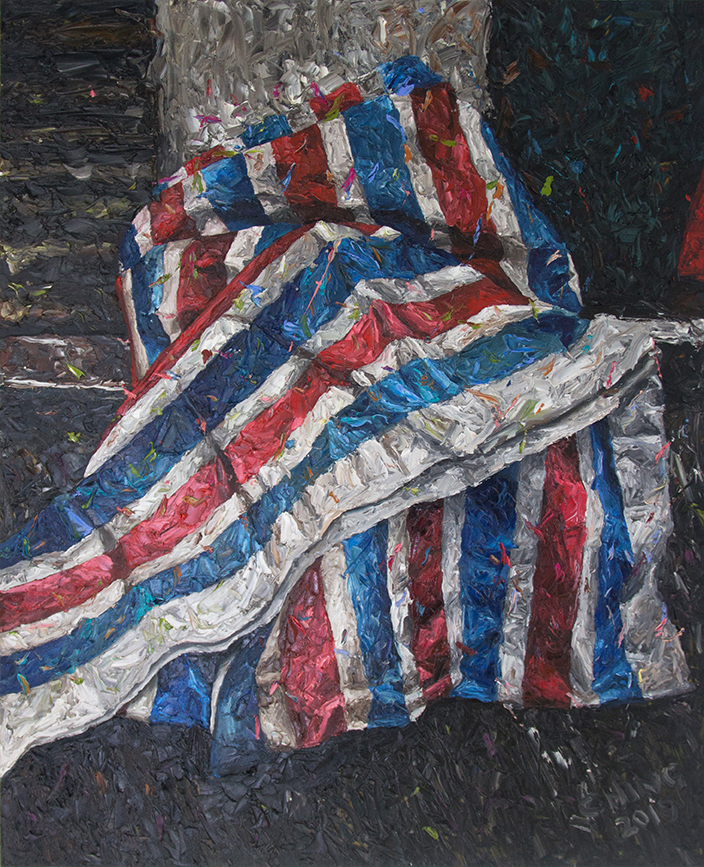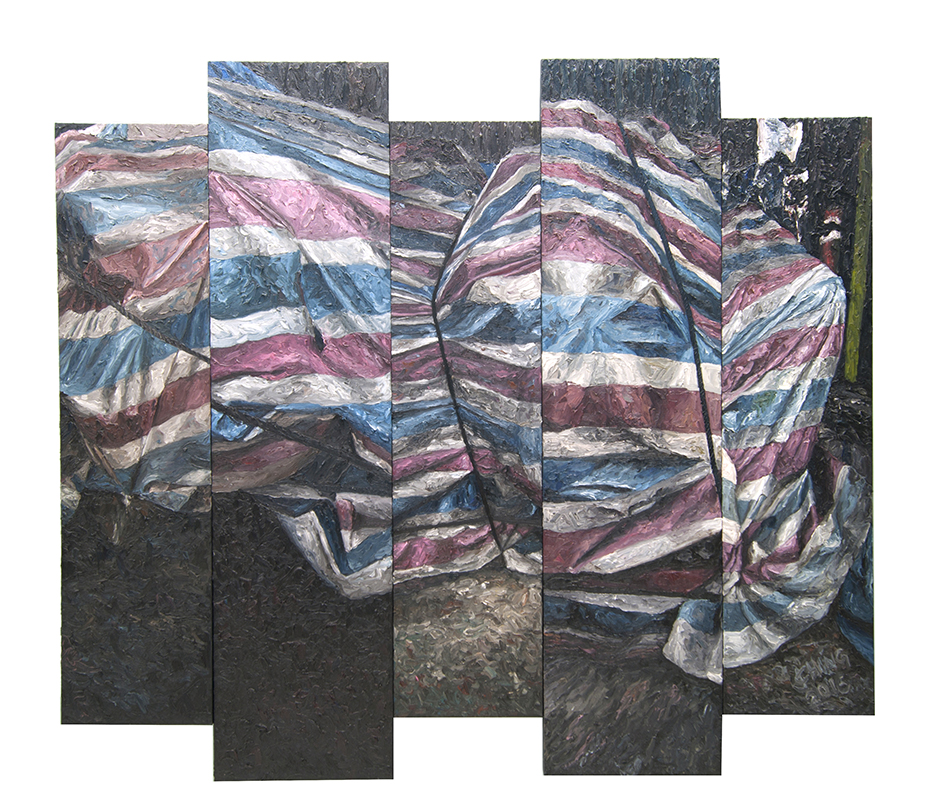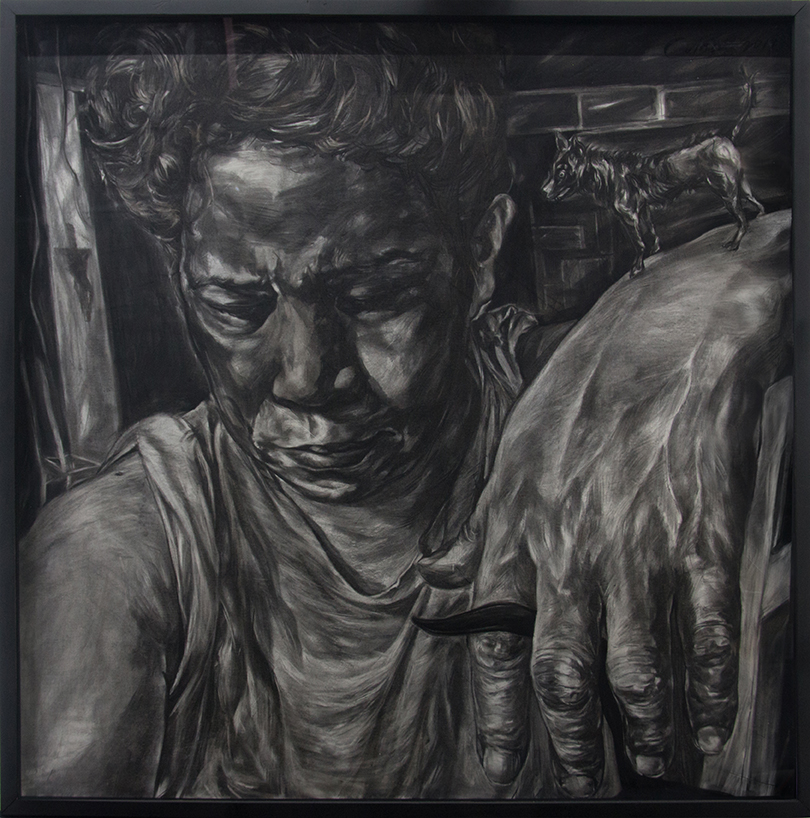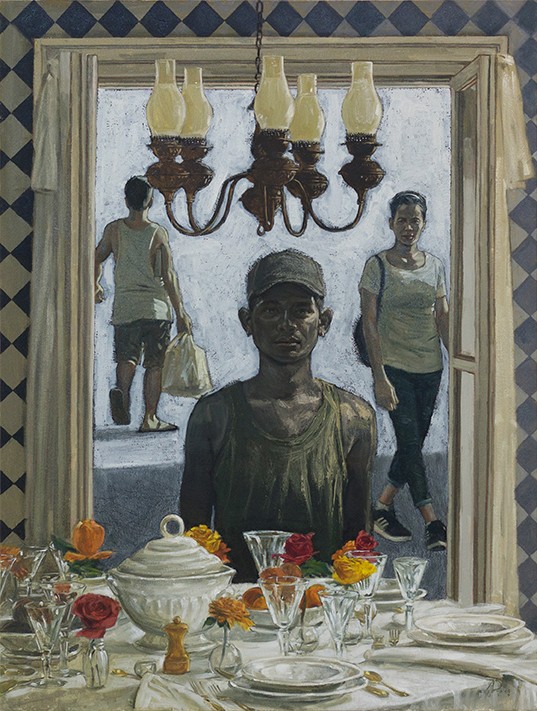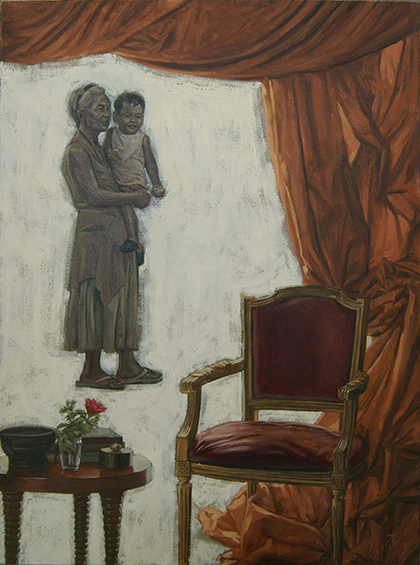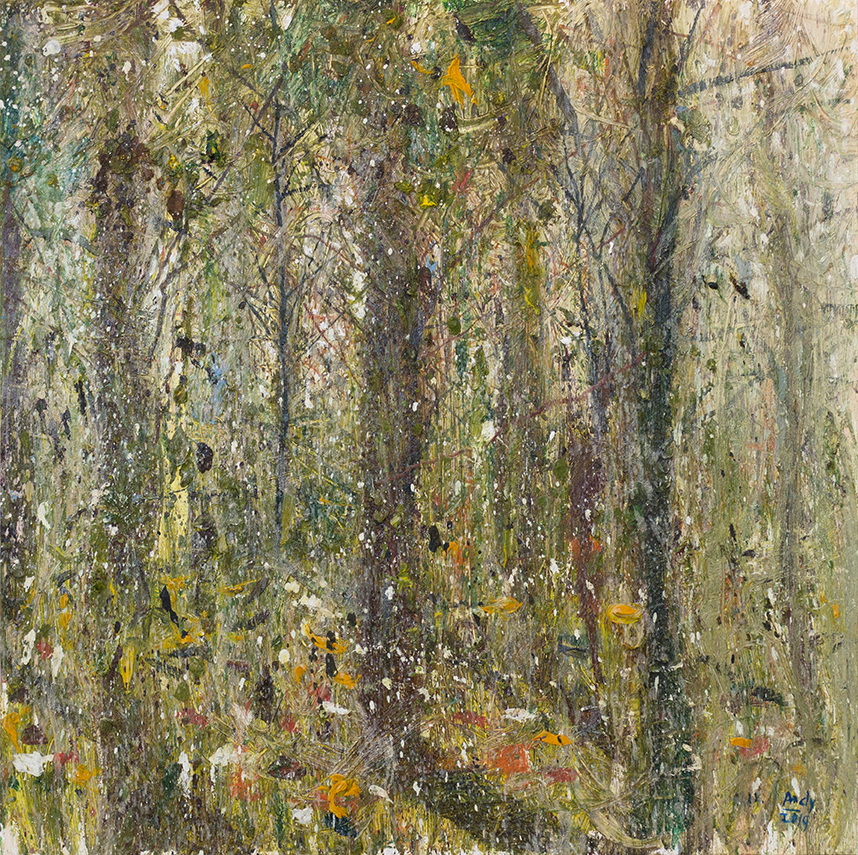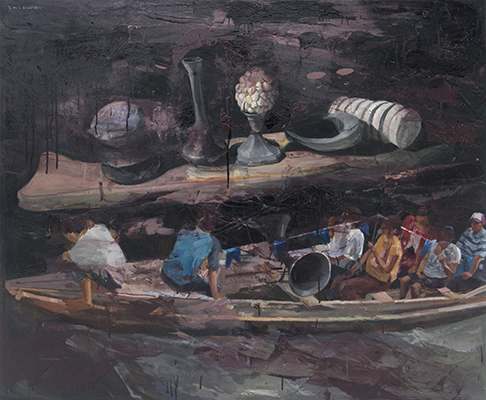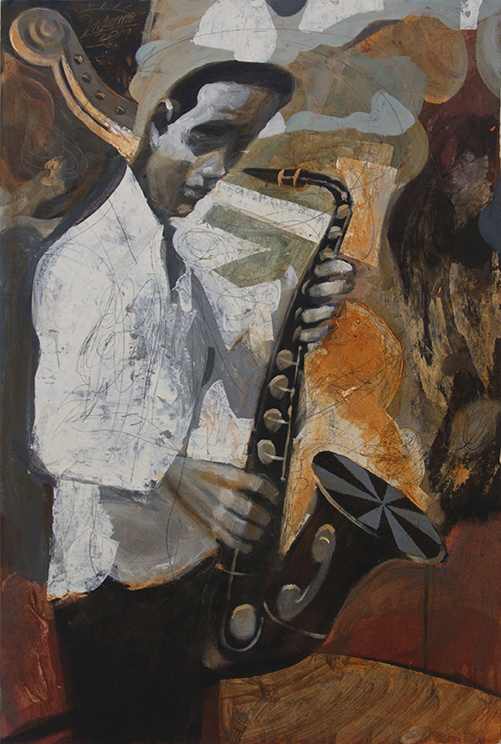DANCE WITH THE MAYFLIES
Gwen Bautista
The average lifespan of Mayflies is brief. After they emerge from their underwater existence as nymphs, they can only live within twenty-four hours. A monotypic genus of the Mayfly, the Dolonia americana survives only for less than five minutes. In their fleeting existence, Mayflies perform what seems to be a nuptial dance above water: the males congregate in swarms as the females fly into them. They mate and then die.
Exploring on the true meaning of life and our continuous struggle to find its purpose, the exhibition “Dance with the Mayflies”, features slow and differing takes on the momentary and yet essential parts of our being. The exhibition navigates through tropes of the ephemeral and the transient; an emphasis to the subtle and often trivial scenes, images, objects, and people that make up what we are to the world.
Working through a tedious process in hunting and selecting images to translate on canvas, Allan Balisi draws images from photographs, screen captures, and other sources that specifically illustrate struggles. Reconstructing these images through painterly conditions, Balisi allows his own framing to become unclear, inconsistent, and detached. In “Firefly”, Balisi depicts a dramatic image of a burning car. Hinting at destruction and tragedy, “Firefly”, somehow deals with light and illumination, which emits the feeling of relief to become resigned to the inevitable.
Jonathan Ching’s continuing series of urban landscapes sheds light on the often-ignored corners of his Manila neighborhood. In “Red, White, and Blue” and “Stripes,” tarpaulins rest in the middle of the street as they drape over burrowed objects; tucked away from the loud and chaotic movements of the city. However, Ching believes that meanings can become interchangeable. Instead of looking at his works as ordinary landscapes, the artist accepts that political fervor might take interpretation in another direction.
Melvin Culaba’s “La Dolce Vita” is a self-portrait, which highlights the ironies of life. Partly influenced by Federico Fellini’s 1960 film with the same title, the protagonist in the film carry moments of quiet reflection despite his hedonistic character. Translated to English, the title means “The Sweet Life”, a fitting phrase to describe the life of the artist as he contemplates mortality through his battle with diabetes.
Feelings of emptiness and isolation can be found on Antipas Delotavo’s “Entree” and “Interior 1”. Both paintings highlight objects that illustrate grandiosity: elegant curtains, furniture, and a porcelain dining set. In the background, Delotavo’s melancholic images bare the truth in what we deal most with life: regret. The Roman Philosopher, Seneca the Younger once said, “It's not that we have a short time to live, but that we waste a lot of it.”
Mark Andy Garcia’s reflection of life can be seen in “New Beginning”. Here, the artist creates work that provides him a sense of meditation and tranquility. Consciously avoiding the gloomy and the dark, Garcia sets himself up for a situation where his emotions and feelings are influenced by his own creation. Hence, being in control can make the most of us at ease.
Geraldine Javier’s “World’s End” merges a plant, Stapelia Grandiflora (more known as carrion flower), with a torched wooden container. Also popular as corpse flower, it emits odor that resembles rotting flesh. Javier’s strong reference to mortality in her body of works often provoke the viewers to think about existence through the most unpredictable representations of life.
Winner Jumalon’s “Ida y Vuelta (round trip)”, illustrates the journey over a body of water. Implied scenes of people departing the place where they come from and somehow sailing in parallel with another boat. The people watch as the other boat sails and carries objects instead of people. Jumalon captures a sense of resentment in knowing how people and communities are replaced by earthly treasures.
Anthony Palomo’s “I Wish I Knew” is a sentimental ode to a mentor; recognizing the ability of another person to transform and refine your shortcomings. In this work, Palomo examines life in relation to how we deal with others. The people around us become catalysts for the meanings we ought to find.
Perhaps, it is important to note that even with their short and brief existence, the Mayflies are vital in our ecology. It is within these manifestations of mortality through another specie that, we, as humans project our fears and consternation when we think of our own end. And so, “Dance with the Mayflies” is another opportunity to look through our deepest desires. Our existence should be relative to how we choose to live our limited time on earth. There can be so much more to do and while we’re at it, take a pause and smell the roses.


